Most people are aware of the power of first impressions.
However, our appearance and the first words we utter are only one part of the impact we have on others.
Arguably, the final words we exchange during an interaction can have an even more lasting effect. And that applies to public speaking, too.
Obviously, the way you introduce yourself and the topic you’ll be discussing is important.
However, the end of a presentation should also be recognized as a crucial part of the experience.
With that in mind, this article will walk you through some:
- Things you should consider before drafting your conclusion,
- Tips for ending a presentation memorably,
- Mistakes you should avoid, and
- Phrases you can use to wrap up your speech.
But, before we discuss how to end a presentation, let’s establish why having an impactful conclusion is so essential.
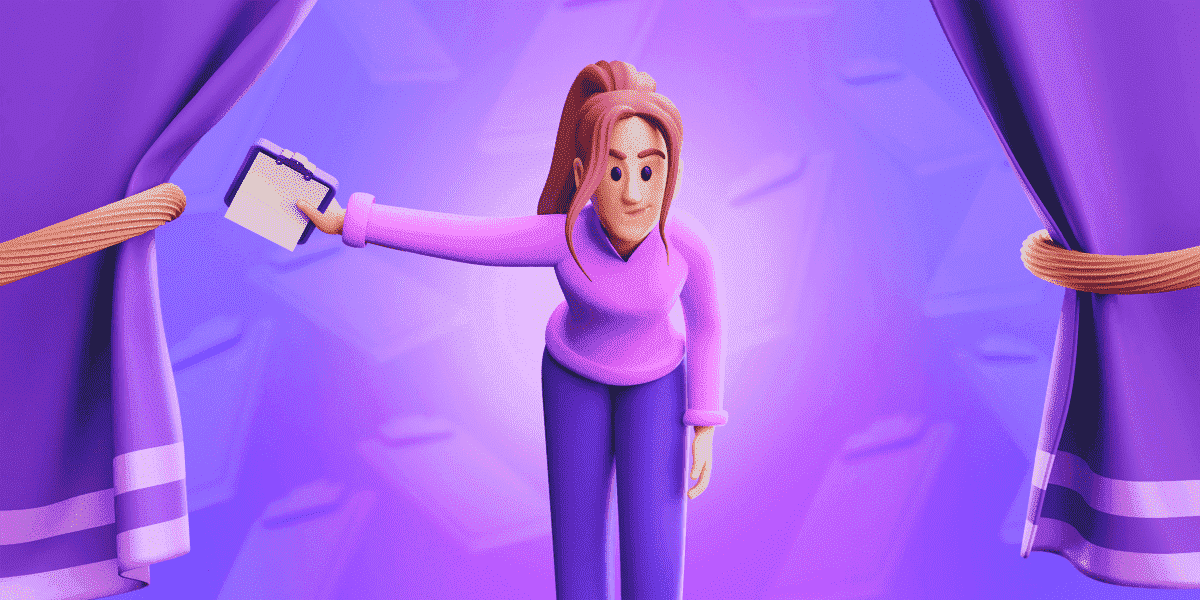
Table of Contents
Why is it important to have an impactful ending for your presentation?
In our article about starting a presentation, we explained how the steps of the motivated sequence framework correspond to the structure of the average presentation or speech.
As we have established, the introduction of a presentation mirrors the first step of that model. That means that one of its main goals is to get the listeners’ attention.
The central part of the speech, or the body, corresponds to the second, third, and fourth steps of the motivated sequence framework. In other words, it has to:
- Introduce the audience’s need (or identify a problem the listeners are having),
- Offer a way to satisfy (or resolve) that need, and
- Help the listeners visualize the successful implementation of the speaker’s solution.
Having checked off these points, we arrive at the conclusion, i.e., the subject of this article.
That stage of a presentation corresponds to the final step of the motivated sequence model — which consists of the call to action.
So, the conclusion of a presentation allows the speaker to drive their point home and nudge the audience toward performing a specific action.
However, that’s not the only purpose of a conclusion.
According to the authors of Business Communication: Process & Product, the final section of a presentation should achieve 3 goals. It should:
- Summarize the main themes of the presentation,
- Leave the audience with a specific and noteworthy takeaway (i.e. propose a specific course of action), and
- Include a statement that allows the speaker to leave the podium (or pass the mic) gracefully.
Above all, the ending of a presentation should be memorable, akin to the punchline of a joke.
Having said that, let’s talk about some factors you should consider as you’re writing the conclusion of your speech.
Things to consider before crafting the conclusion of your presentation
If you’re trying to figure out how to end a presentation, knowing the goals of a conclusion should help.
However, those objectives are only one part of the puzzle. To get the others, you should also consider:
- Your audience’s demographic breakdown,
- The general purpose of your presentation,
- The specific purpose of your presentation, and
- Your thesis statement.
With that in mind, let’s see how each of these factors can help you develop an impactful conclusion for your presentation.
Factor #1: The demographic breakdown of the audience
As we have noted in our article about starting presentations, understanding the demographic breakdown of one’s audience is a crucial part of drafting a speech.
After all, the audience affects all of the choices we make — from the way we present ourselves to the vocabulary and the supporting materials we use during our presentations.
In our quest to learn more about the effect an audience can have on a presentation, we spoke to Persuasion Strategist Juliet Huck.
Having spent a significant portion of her professional career preparing people to take the witness stand, Huck knows a thing or two about adjusting one’s messaging to fit the preferences of one’s audience. She says:
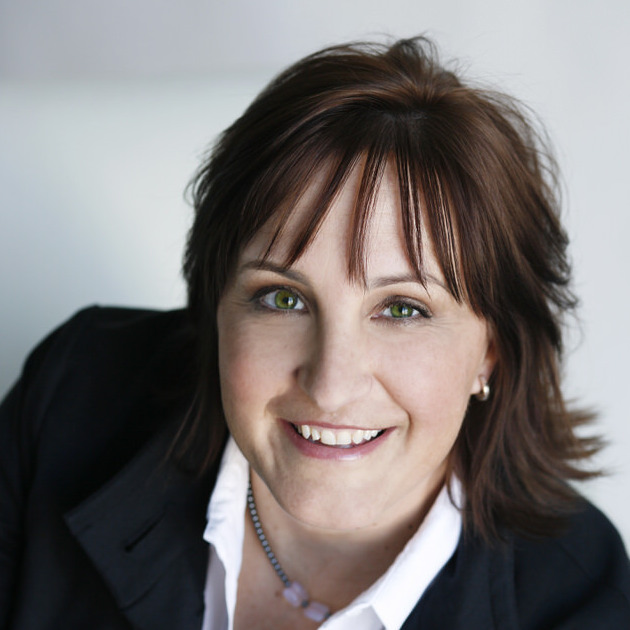
“[The] ending [of] every presentation should be different and always based on the background of your audience. This should not be a blanket statement.
It also depends on if you are educating your audience or persuading them to make a decision in your favor.
You must do the homework on your audience prior to giving a presentation and end by leading them to your desired conclusion by giving them a conclusion they can relate to.”
But, if you’re not entirely sure how to take your audience into account when drafting your conclusion, consider the following questions:
- How will your audience connect to the topic you’re discussing?
- How can you relate the information you’re sharing to the listeners’ needs?
- What would make your audience think back on your presentation in positive terms?
- What would be the most effective way to get your point across to this specific audience?
Knowing whether your audience is friendly, neutral, uninterested, or hostile will also help you adjust your approach.
If nothing else, it’ll tell you whether you should stick to the facts or feel free to deliver a more casual or rousing speech.
Examples of different audience breakdowns
In our article about starting a presentation, we demonstrated our tips through 3 fictional speakers. So, let’s use the same presenters to illustrate this point.
- Nick Mulder is talking about the dangers of phishing. He introduced himself as the head of the security department. So, we can assume that he’s speaking to an audience of fellow employees, perhaps even through video conferencing software. Therefore, he was addressing an internal problem the company was having in front of a fairly receptive audience.
- Joan Miller is talking about how artificial intelligence is changing the future of the marketing industry. In her introduction, she mentioned having over four decades of experience in marketing. Consequently, we can infer that she’s speaking to an audience of marketing specialists who were previously unaware of her credentials.
- Milo Green is talking about employee retention. In his introduction, he indicated that the audience may know him as the founder of Green & Co. So, he’s probably famous enough to be recognized by at least a portion of his audience. Between that and the subject of his presentation, we can assume that he’s talking to the upper management of other companies.
From our examples, we can see how the identity of the speaker and their level of familiarity with the listeners might affect the way they prepare their presentations.
Host engaging virtual presentations over Pumble
Factor #2: The general purpose of your presentation
Understanding the general purpose of a speech brings you one step closer to knowing how to end a presentation.
According to the authors of Communicating at Work, most presentations can be sorted into one of 3 categories based on that factor. In that regard, your presentation could be:
- Informative, aiming to expand the listeners’ knowledge and/or help them acquire a specific skill,
- Persuasive, with the goal of changing the listeners’ opinions or encouraging them to behave a certain way, or
- Entertaining, which is good for getting the audience to relax and look forward to upcoming speakers or events.
The general purpose of your presentation will naturally affect your conclusion because it will change what you choose to emphasize.
💡 Pumble Pro Tip
The basic goal of your presentation could correspond with the type of presentation you’re giving. To learn more about presentation types and styles, check out this article:
Examples of defining the general purpose of a presentation
Let’s see how our imaginary presenters would define the general purpose of their presentations.
- The general purpose of our phishing expert’s presentation is informative. The speaker’s primary goal is to teach his coworkers how to recognize and defend themselves against phishing attempts.
- Our marketing expert’s presentation is persuasive. She wants to change her listeners’ minds and make them more open to using AI in their marketing campaigns.
- The last speaker’s presentation about employee retention is also persuasive. After all, the speaker is attempting to show his listeners how they can increase the employee retention rate at their own companies. However, depending on the circumstances surrounding the speech, it could also take on some entertaining qualities.
Factor #3: The specific purpose of your presentation
The specific purpose of a presentation is essentially the outcome you’re looking to achieve with your speech. Defining this goal will require you to know the answers to the following questions:
- Who do you want to influence?
- What do you want them to think or do?
- How, when, and where do you want them to do it?
Ideally, the specific goal you come up with should be realistic and highly specific.
To that end, the authors of Communicating at Work recommend setting measurable goals. So, for example, instead of thinking: “I want to get approval for my project.”,
Try:
“I want my manager to let me set aside one day per week to work on this project. I also want them to let me ask one or two other people to help me with it.”
Having this kind of goal in mind will help you figure out how to wrap up your presentation.
Examples of defining the specific purpose of a presentation
So, how would our 3 speakers specify the desired outcomes of their presentations in measurable terms? Let’s see:
“I want the people in my company to understand the dangers of phishing attacks. They should learn the exact steps they need to take when they see a suspicious email in their inbox.”
“I want these marketing experts to be more knowledgeable about the way artificial intelligence works right now and understand how they can incorporate that software into their professional practice.”
“I want managers and HR professionals to know how they can make their companies a better place to work so they can keep their employee retention rate high.”
Factor #4: Your thesis statement
Ultimately, defining the general and specific goals of your presentation is a great way to keep yourself on track when crafting your speech.
However, the audience doesn’t need to know those goals.
Instead, they can hear your thesis statement — a summary of your overall message.
You can treat this statement as the throughline of your presentation. It will appear at least once in the introduction, followed by a few repetitions throughout the body of the presentation.
Finally, you’ll also want to include that same idea in your conclusion at least once.
In addition to keeping you, as the speaker, grounded, that repetition also keeps your audience from wondering what your presentation is about.
Examples of defining the thesis statement of a presentation
So, what would a thesis statement look like in practice? Let’s hear it from our fictional presenters:
“Identifying and reporting phishing emails will save the company’s information and money in the long term.”
“Right now, artificial intelligence isn’t as advanced as people think it is. However, we can still use it for marketing purposes as long as we make sure the process doesn’t begin and end with AI.”
“Improving your employee retention rate makes employees more engaged with their work and saves the company time and money that would otherwise go to training new personnel.”
How to end a presentation with a bang: 10 tips + examples
Now that we know why having an impactful conclusion is so crucial, it’s time to find the right way to achieve your goals.
To that end, we have highlighted 10 tips that might help you wrap up your presentation.
- Reiterate the key points and your core message.
- Mirror your opening statement.
- Elicit a response.
- Engage the audience.
- Call to action.
- Hand out materials.
- Acknowledge your contributors.
- Provide contact information.
- Thank the audience.
- Ask for feedback.
Of course, many of these methods we’ll discuss can be combined. However, your choices may be limited depending on the factors we have previously mentioned.
Tip #1: Reiterate the key points and your core message
Making sure the audience remembers your main points is one of the most important objectives your conclusion should accomplish.
With that in mind, you should dedicate some time at the end of your speech to reinforcing what you were trying to say throughout your presentation.
Take it from Mark Beal, Assistant Professor of Professional Practice, Communication, at Rutgers University:

“Every presentation should deliver and consistently reinforce three key message points. Most audience members will not recall more than three messages. Some may only recall one or two. With that [in mind], an engaging and effective presentation should conclude with the three messages the presenter wants the audience to take away.”
In essence, you’ll want to summarize your presentation by reiterating up to 3 key points and then repeating your thesis statement.
You could even translate this tip to your presentation slides. As Juliet Huck says:

“Your last slide should always draw your audience to your desired conclusion. [It] should be your billboard message, as we remember 70% of what we see and 20% of what we hear.”
We can see what that might look like through the example of our imaginary presentation on the dangers of phishing, below.

Tip #2: Mirror your opening statement
According to the authors of Communicating at Work, splitting a narrative between the introduction and the conclusion of your presentation is a good way to keep your audience’s attention.
Assistant Professor of Rhetorical Communication at the State University of New York, Dr. Lee M. Pierce, agrees:

“Psychological closure is looping back to the beginning to give the audience a sense of a closed circle. Don’t add new information in the conclusion, just tie the presentation up with a bow.
[For example,] I always customize my closings based on the opening of the speech. During a TEDx Talk on Beyoncé’s ‘Formation,’ I began by walking out to the introduction to the song, and then I ended by walking off to the end of the song.”
The above quote demonstrates that this tip can be useful no matter which method you used to start your presentation.
You can use it to put a new spin on a statistic you shared in the introduction, give a story you told a different ending, or finish the punchline of a joke you started with.
Overall, coming back to the theme you introduced at the beginning of your speech should make your presentation seem more complete and intentional.
Phrases you can use to reflect the introduction of your presentation in the conclusion
With all that being said, let’s see how our imaginary speakers would mirror the opening lines of their presentations in their conclusion.
Having started with a phishing statistic, our first speaker might say:
“Going back to the number we started with, remember that the Anti-Phishing Working Group has recorded 1,270,883 individual phishing attacks in the third quarter of 2022 — and that number is always on the rise. Luckily, you now have all the information you need to avoid becoming a part of that statistic.”
Our second speaker would have announced her plans to survey her listeners at the beginning of her presentation. In her conclusion, she might say:
“At the beginning of my presentation, I asked you to answer a quick survey on whether you’d be willing to work with AI. If you look back at your phones, you’ll see a different link in the #general channel on Pumble. Let’s see if this talk has managed to sway some opinions!”
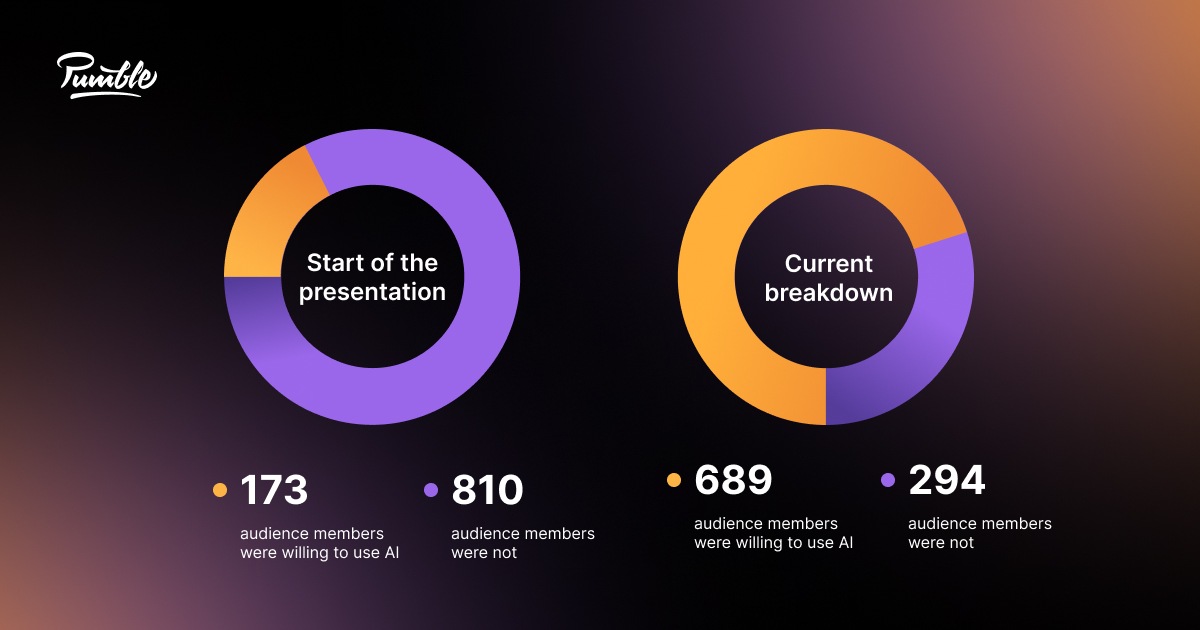
Lastly, our final speaker might refer back to a humorous statement he made about chaining one’s employees to their desks to ensure that employee retention rates stay high.
“Once you start making your company a better place to work, your employees will happily perform their daily tasks — without being glued to their desks.”
Tip #3: Elicit a response
Making an audience experience strong emotions is always a good thing, but especially as the presentation comes to a close.
Putting the listeners in a contemplative mood or, even better, a cheerful one, means that they’ll be more likely to remember you and the points you made after your presentation ends.
On top of that, concluding your presentation in this manner would allow you to step off the stage gracefully, which is one of the main goals your conclusion should accomplish.
Now, depending on the type of presentation you’re delivering and, indeed, your style of presenting, you could elicit a response by:
- Ending with a short but powerful statement,
- Asking a thought-provoking rhetorical question,
- Relying on an impactful statistic or a quote, or even
- Inserting a funny picture or a meme on your final presentation slide.
Ask thought-provoking questions and share interesting visuals on Pumble
Any one of these methods could help you solidify yourself and your message in the minds of the audience.
Phrases you can use to elicit a response from the audience
So, how would our 3 presenters try to get a response from their audiences? Well, they might use the following statements.
“Ultimately, the best defense against phishing attacks is human intelligence. You, alone, can ensure that your information remains secure by implementing the checklist I’ve shared today.”
“So, let me ask you again. Would you be willing to incorporate AI into your marketing campaign?”
“Hey, if the conditions you’re offering to your employees are good enough — there’s no need to keep them glued to their desks.”

Tip #4: Engage the audience
As we’ll discuss later on, having a Q&A session at the end of your presentation doesn’t always pan out the way you want it to.
Even so, getting your audience — or at least a few select listeners — to verbally respond to you can go a long way toward making you seem like a more engaging speaker.
Still, you can’t implement this tip without a strategy. You want to lead your audience to a certain type of response.
Professional speaker, career change consultant, and host of the Career Relaunch® podcast, Joseph Liu, had this to say:

“I often invite attendees to share what action they’re going to take amongst the potential ones I’ve covered throughout the presentation or to at least commit to taking some sort of action.”
Speaker, author, and editorial producer at CNN, Nadia Bilchik, agrees:

“If time allows, I always ask participants to share their biggest takeaway.”
The quote above also highlights the importance of being aware of the time as you are concluding a presentation — which is another thing we’ll talk about later.
For now, we’ll just boil this tip down to the following statement: if possible, try to make people verbalize or at least think about the knowledge they’re taking away from your speech.
Phrases you can use to engage the audience
Going back to our imaginary speakers, let’s see how this tip might work in practice.
“As we approach my conclusion, I’d like for us to reflect on everything we’ve learned here today. So, let me turn the spotlight on you all. Does anyone remember how to recognize a phishing email without opening it?”
“Now, I’m sure everyone here has some idea of how they might incorporate AI into their next marketing campaign. Is anyone willing to share their strategy?”
“Alright! Pop quiz time — don’t worry, I won’t grade you. Can you all shout out the main 3 ways to increase employee retention? Number 1?”
Tip #5: Call to action
Once you have finished reiterating your core message and making sure you have your audience’s attention, you need to be able to direct the listeners to the next step.
As Michelle Gladieux, author of Communicate with Courage and President of Gladieux Consulting, an employee coaching provider, would put it:

“What can the audience DO with the information you’ve shared? Suggest a positive, fruitful next step or, even better, suggest several, and let your presentation participants choose among options that have panned out well for others.”
In her workshops, Gladieux says:

“We ask participants to document at least one goal for behavior change that is specific, measurable, and time-based, and take a bonus step of inviting them to name one person they’ll tell about their goal for added accountability.”
According to the authors of Communicating at Work, there are 2 ways to deliver a call to action at the end of your presentation. Namely, you can either phrase it as:
- An appeal or a question (e.g. “If any of this sounds interesting, you can learn more by signing up for our newsletter through the link on the screen behind me.”), or
- A challenge or a demand (e.g. “Now, you can keep doing what you’re doing and getting lackluster results. Or, you can sign up for our newsletter to receive tips that will help you upgrade your strategy.”).
As always, your choice will depend on the factors we have listed at the top of this article.
Phrases you can use to call the audience to action
Let’s see what our fictional speakers’ calls to action might look like.
“Remember, even if you happen to open a phishing email, you’ll be able to deal with it easily by forwarding it to this email address. That’s the main thing you need to remember from this talk.”
“I bet many of you could come up with even more creative ways to incorporate AI into your marketing campaigns. So, how about this: if you fill out the form I’m about to send you, I’ll check in with you in about three months. Those of you who succeed in using AI in a meaningful way will get a chance to share your insights on this very stage next year!”
“I have a challenge for those of you who are ready to meet me at my level. I want you to sign a pledge, promising to boost your employee retention rate by 10% in the next year. We had a similar experiment at one of my talks a couple of years back, and even I was surprised by the results.”
_______
If you decide to accompany this part of your speech with a call to action slide, keep Juliet Huck’s advice in mind:

“A call to action slide is not always persuasive. Persuasion is not a call to action — it is a directed action. To ‘call’ means someone can say no, but to ‘persuade’ [is to] direct your audience to your desired conclusion based on a number of steps.”
In effect, that means that your call to action should be the final step of your persuasion strategy.
You should start building to that desired outcome well before you get to the end of your presentation.
Tip #6: Hand out materials
The ending of a presentation is the perfect time to give the audience a keepsake of your speech.
But, keep in mind that a memento doesn’t have to be a physical item. As Michelle Gladieux would say:

“I like to direct my audiences to free downloadable resources on our website for those who want to continue their personal and professional growth as leaders and communicators.”
So, sharing resources through email or a business messaging app would work just as well.
Of course, you don’t have to hold off until the conclusion of your presentation to give your audience something to remember you by. Gladieux also shared a method she used in her workshops:

“[Most of our] participants have our high-quality original workbooks in hand during the presentation and available later as a tangible resource. Folks add notes, take short assessments, and work on case studies when we teach using workbooks. If we use presentation slides, we keep the content as engaging visually as possible and short on words.”
If your budget allows you to do something similar, that might be a good way to make the audience remember you.
Phrases you can use before handing out materials
In the scenarios we have conjured up, the speakers might introduce their additional materials like so.
“If you’re interested in learning more about phishing and how you can defend yourself from future attacks, you’ll find more information by following the link on the screen.”
“Now, at this point, I see that my associates have already started delivering some additional materials and miscellaneous goodies to you. I hope you’ll use them to workshop further ideas for using AI in your marketing strategies.”
“I’ll go ahead and forward these presentation slides as well as some additional resources for improving employee retention to you all.”
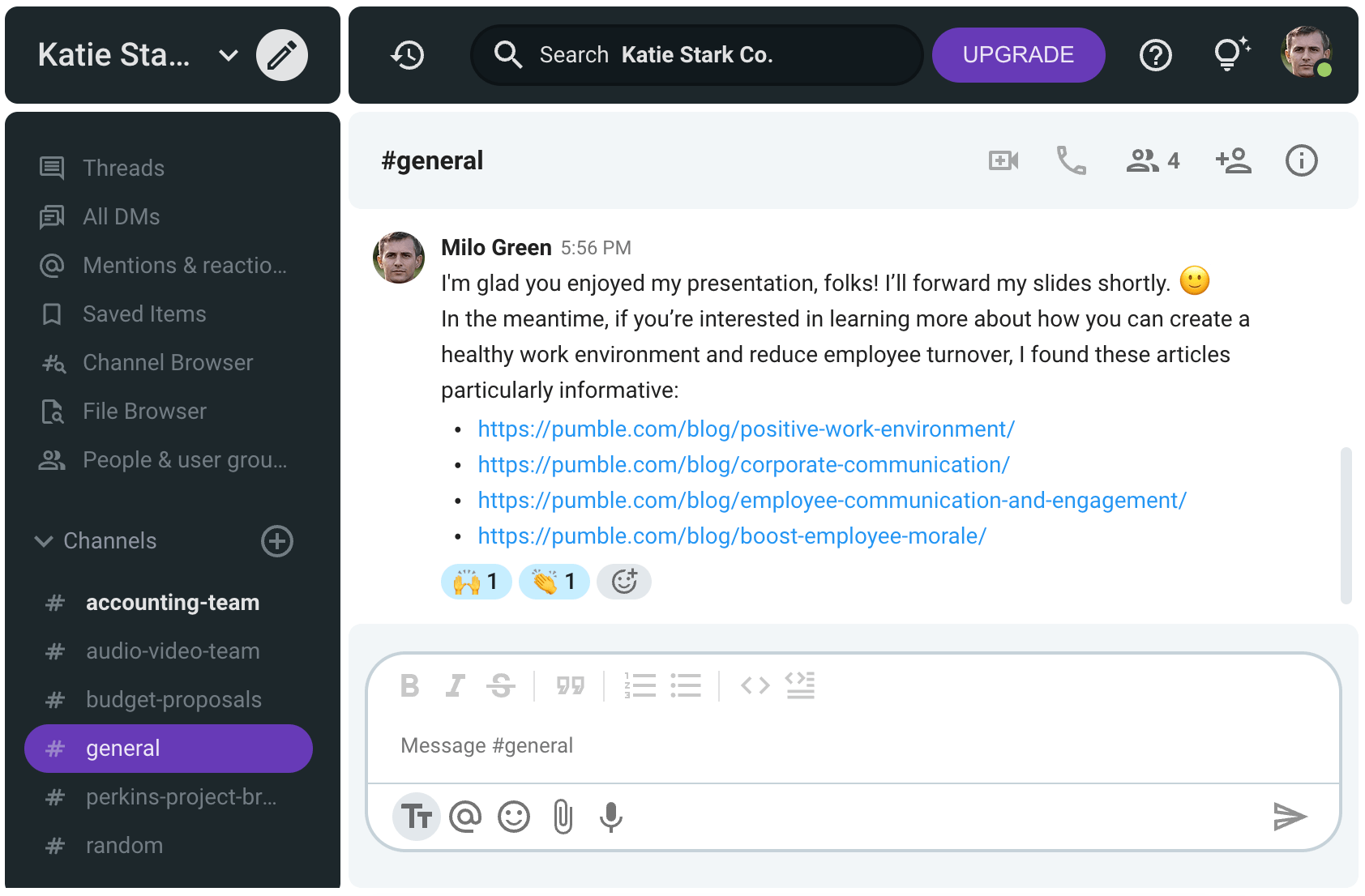
💡 Pumble Pro Tip
If you’re looking for a convenient way to deliver additional resources to the attendees of your speech, Pumble is a great option. This article offers some practical tips for using business messaging software for educational purposes — including online conferences:
Share resources and engage your audience on Pumble
Tip #7: Acknowledge contributors
If you’re delivering a business presentation as a representative of a team or a department, you can also use the final moments of your speech to acknowledge everyone who worked on the presentation with you.
On the one hand, you could simply thank your team in general terms and leave it at that.
Alternatively, you could highlight the individual contributions of specific team members if you want to make sure their effort doesn’t go unnoticed.
Phrases you can use to acknowledge your contributors
Here’s how our fictitious presenters might acknowledge the people who helped them create their presentations:
“Before I sign off, I’d like to take a moment to thank Jill and Vanessa from the security team, who helped me compile the data and create the slides you just saw.”
“Finally, I’d like to acknowledge that this presentation wouldn’t be half as informative without the experts who helped me understand the technical side of AI.”
“Now, let’s all give it up for my wonderful team, who helped me organize this lecture.”
Tip #8: Provide contact information
Business presentations often double as networking opportunities, both for presenters and for audience members.
With that in mind, you might want to put your contact information on one of your closing slides.
For one, doing so would show the audience how they can get in touch with you after your presentation ends. After all, they may have additional questions or even interesting business opportunities for you.
On top of that, putting your contact information on the last slide is also a good way to remind the audience of your name and credentials.
For that reason, our second imaginary speaker might have “Joan Miller — Chief Marketing Officer at Happy Media” on her final slide.
Phrases you can use to provide contact information
So, how would our presenters encourage their audience to keep in touch? Well, they might say:
“I’m always happy to answer any of your security or phishing-related questions on Pumble. You’ll find me by clicking the plus sign next to the direct messages section and searching my name, Nick Mulder.”
“If you all have any follow-up questions for me or one of the AI experts I’ve spoken to, you’ll find all of our contact information on this slide.”
“If you want to stay up to date on Green & Co’s latest news, follow us on LinkedIn.”

Tip #9: Thank the audience
Many presenters find a way to incorporate a “thank you” slide at the end of their presentations.
If you want to express your appreciation to your audience members, you could do the same thing.
However, as we’ll soon discuss, many of the experts we’ve spoken to would advise against having pointless visuals at the end of your presentation.
After all, you want to leave the audience with something memorable to take away from your speech.
Still, if you want to thank the audience, you could always make that final slide serve multiple functions.
For example, a “thank you” slide can also contain the speaker’s contact information, as well as additional resources.
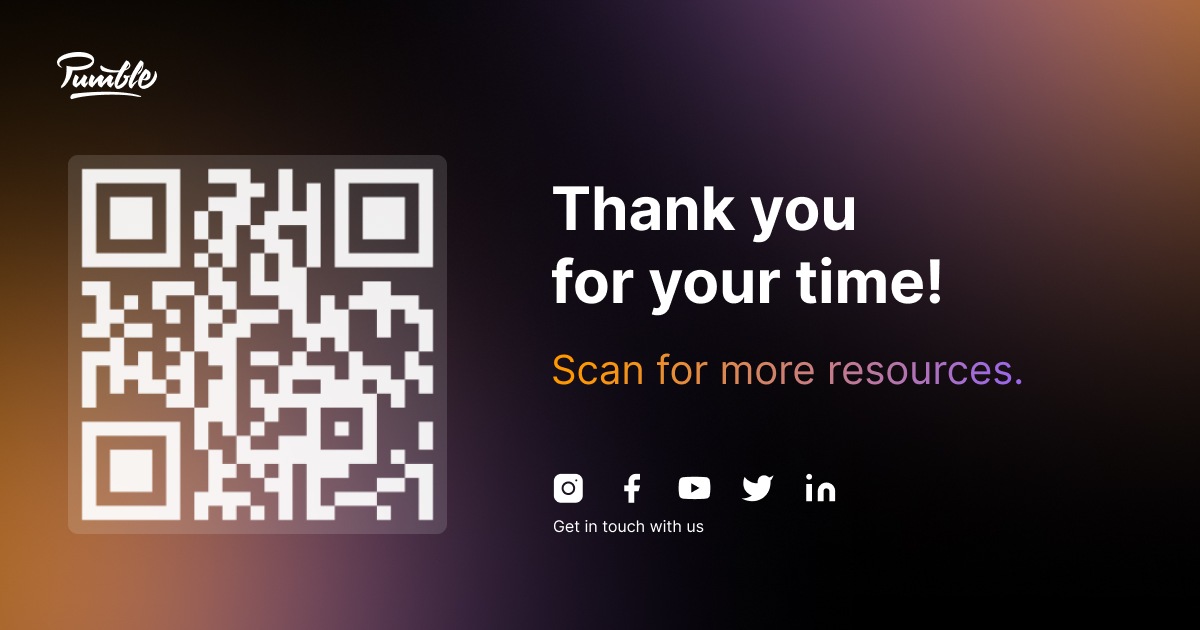
This example “thank you” slide above features a QR code (you can create one using a QR code generator) leading to more resources — it prompts the audience to find the speaker on various social media platforms.
Tip #10: Ask for feedback
Lastly, some speakers might benefit from knowing what the audience thinks about their delivery and other aspects of their presentation.
That’s why some of the experts we’ve spoken to suggest that conducting a brief survey of the audience could be a good activity to end a presentation with.
Rutgers University professor, Mark Beal, says that:

“Offering audience members the opportunity to take a concise survey at the conclusion of a presentation will result in valuable insights that will inform how to consistently evolve and improve a presentation. […] We use the last few minutes of seminars to allow participants to answer a few questions about what was most useful in our content and delivery, and what, in that individual’s opinion, could improve.”
Michelle Gladieux is also an advocate for audience surveys, saying:

“I’ve delivered thousands of training workshops and keynotes and never miss an opportunity to ask for feedback formally (in writing), informally (in conversation), or both. As you might guess, I advise every presenter reading this to do the same.”
You could encourage this type of feedback by:
- Asking attendees to share their thoughts on your presentation after you step off the stage,
- Setting up a notebook near the door and asking people to jot down their thoughts as they exit,
- Having a suggestion box for hand-written feedback notes, or
- Creating an anonymous survey online and linking to it on your presentation slides.
Most presenters nowadays tend to rely on technology to compile audience feedback, but the method you use will depend on the circumstances surrounding your presentation.
💡 Pumble Pro Tip
If you’ve never had to ask for feedback before, you might find this article interesting:
Share constructive feedback seamlessly over Pumble
The worst ways to end a presentation
Having gone through the best practices for concluding a presentation memorably, we also wanted to know what are some of the mistakes speakers should avoid as they reach the end of their speech.
The experts we have spoken to have identified 5 of the worst ways to end a presentation:
- Overloading your final slide.
- Settling for a lackluster closer.
- Ending with a Q&A session.
- Not having time for any questions at all.
- Going over your time.
So, let’s see what makes these mistakes so bad.
Mistake #1: Overloading your final slide
Overloading your presentation slides isn’t a mistake you can make only at the end of your presentation.
Professional speakers know that slides are only there to accompany your speech — they shouldn’t be the main event.
As Nadia Bilchik says:

“Slides are only there to support your message. Towards the end of the presentation, I may even stop the slideshow entirely and just have a black screen. At the very end of the presentation, my suggestion is to have a slide up with the next steps or a call to action.”
Dr. Lee M. Pierce also tends to use blank slides:

“I always end and begin with blank slides. As a speaker, you’re trying to build connection and rapport between you and the audience, not between the audience and your slide deck.”
Therefore, putting too much information onto a single slide can make the speaker seem unprepared, in addition to overwhelming the audience.
When in doubt, remember Kawasaki’s 10/20/30 rule:
- No more than 10 slides per presentation,
- Keep your presentations under 20 minutes, and
- The text on your slides should never be smaller than 30-point font.
Mistake #2: Settling for a lackluster closer
If your goal is to become a proficient speaker, you’ll have to stop using uninspired closers like:
- “Well, I guess that’s it.”
- “That’s pretty much all I had to say.”
- “That’s about it from me. Can we get some applause?”
The audience will respond if you say something deserving of a response.
Instead of using these bland lines, remember Juliet Huck’s advice:

“Never end your presentation without closing the loop of your beginning theme and being specific when asking for your desire conclusion.”
As we have established, it’s best to conclude your speech by bringing back your thesis statement and key points.
Finishing with weak visuals is similarly offensive — and here we’re not just talking about presentation slides.
Remember, body language is an important component of our communication.
Fidgeting as your presentation comes to a close or slumping your posture as soon as you’re finished speaking won’t do.
As Michelle Gladieux would say:

“Never end a presentation seeming happy to be done, even if you are! Be certain you’re happy to be the presenter before you begin, or find someone else to do it.”
In other words, try not to show signs of anxiety during your presentation.
Maintain a confident demeanor for as long as you remain on stage or as long as you’re on camera, in the case of virtual meetings.
Mistake #3: Ending with a Q&A session
One of the experts we have spoken to, Nadia Bilchik, was particularly adamant about not ending presentations with Q&A sessions.

“Never ever end a presentation on a question-and-answer session. I have seen numerous presenters end by asking ‘Any questions?’ Too often there are no questions, and the presenter is left looking deflated and muttering ‘Thank you.’
[If there are] no questions, you can always say ‘A question I’m often asked is…’ or ‘Something I would like to reiterate is…’ Never end your presentation without your audience being clear about what they are expected to do with the information you have just shared.”
Adding that you can:

“Ask for questions, comments, and concerns, and only then end with a quick wrap-up. The goal is to end with your audience being clear on their next steps.”
Even if the listeners do have questions, there’s a good reason not to have a Q&A session at the very end of your presentation.
Namely, there’s always a chance that someone will ask a question that completely derails the conversation.
If you have the Q&A portion right before your conclusion, you’ll have time to reiterate your core message and proceed with a memorable closing statement.
For reference, you can ask for questions by saying:
“Before I close out this lecture, do you guys have any questions for me?”
Then, if there are no questions, you can still proceed to your conclusion without losing face.
💡 Pumble Pro Tip
A Q&A session is one of the best ways to make your presentations more interactive — but it’s not the only way to go about it. To learn more, check out this article:
Host interactive Q&A sessions over Pumble
Mistake #4: Not having time for any questions at all
Ending with a Q&A session could be a problem — but, perhaps, not as big of a problem as not taking questions at all.
As Mark Beal would say:

“Not giving the audience the opportunity to participate in the presentation via a question and answer session is another ineffective way to end a presentation. Audiences want to have a voice in a presentation. They will be more engaged with the presentation content and recall it more effectively if given the opportunity to participate in the presentation and interact with the presenter.”
Dr. Lee M. Pierce adds:

“It’s always good to leave at least 15 minutes for questions. Leaving 5 minutes is annoying and pointless. Also, be prepared that the audience may not have questions or not feel comfortable just jumping in, so have some of your own questions ready to offer them. You can say something like, ‘Just to put it out there, if I were going to ask me a question, I’d ask…’”
Now, both Nadia Bilchik and Lee M. Pierce have mentioned phrases you can use if no one comes forth with a question.
You’ll notice that the sentences they have come up with will require you to consider the questions you may be asked ahead of time.
In addition to helping you create a better presentation, doing this will also allow you to answer any questions effortlessly.
Mistake #5: Going over your time
Last but not least, many of the professional speakers we have interviewed have stressed the importance of ending one’s presentation on time.
Michelle Gladieux said it best:

“The best way to end a presentation is ON TIME. Respect others’ time commitments by not running over. You can always hang around for a while to speak with people who have more to say or more to ask.”
Dr. Lee M. Pierce agrees:

“The worst thing you can do is run over time. If you were given 45 minutes for a presentation plus 15 minutes for Q & A, you should end at 45 minutes — better if you end at 35 or 40.”
Then again, according to Guy Kawasaki’s 10/20/30 rule, even going over the 20-minute mark could risk boring and alienating one’s audience.
Useful phrases for ending a presentation
In the course of our research, we’ve found many practical phrases one might use to wrap up a presentation.
We even had experts send in their suggestions. For example, Nadia Bilchik says:

“I always end with a very quick summary of the content, a definitive call to action, and a reiteration of the benefits to the audience. This is a superb model, and I have shared it with thousands of individuals who have found it immensely valuable. Use this as your framework:
- What I have looked at today…
- What I am asking you to do…
- The benefits are…”
Other phrases you might use at the end of your presentation include:
“To recap, we’ve discussed…”
“Throughout this presentation, we talked about…”
“In other words,…”
“To wrap up/conclude,…”
“In short, I’d like to highlight…”
“To put it simply,…”
“In conclusion…”
“In summary, the goal of my presentation…”
“If there’s one thing you take away from my presentation…”
“In bringing my presentation to a close, I wanted to…”
If you’d like to incorporate a call to action, you might say:
“I’m counting on you to…”
“After this presentation, I’d like to ask you to…”
“Please take a minute to…”
“Next time you (see a suspicious email), remember to (forward it to this email address).”
To end with a quote, you could say:
“Let me leave you with this quote…”
“That reminds me of the old saying…”
Lastly, more useful phrases include:
“Feel free to reach out if you have any questions.”
“For more information, head to the link on the screen.”
“Thank you for your time/attention.”
“I hope you found this presentation informative/useful/insightful.”
Remember: the last words you say should make it abundantly clear that your presentation has ended.
What should your final slide look like?
If you don’t want to leave your final slide blank as some of the experts we have talked to would recommend, there are other ways to fill that space.
Joseph Liu told us:

“I tend to make it very clear the presentation is coming to an end by having a slide that says, ‘Closing Thoughts’ or something to that effect. I recommend ending with a recap of your content, reconnecting with the initial hook you used at the start, and finally, some sort of call to action.”
Mark Beal has a similar formula for his closing slides, saying:

“The final slides of my presentation include:
- A slide featuring three key messages/takeaways,
- A question and answer slide to engage the audience at the conclusion in the same manner a presenter wants to engage an audience at the start of a presentation, and
- A final slide including the presenter’s contact information and a website address where they can learn more information.
This slide can include a QR code that the audience can screenshot and access the presenter’s website or another digital destination.”
Between these two suggestions and the many examples we have included throughout our guide, you ought to have a clear picture of what your final slide might look like.
End your presentations with a bang on Pumble
Knowing how to end a presentation effectively is a skill like any other — you’re bound to get better through practice and repetition.
To get the most out of your presentations, make sure to give them on Pumble.
Pumble — a team communication and collaboration app — allows you to have the most interactive, efficient presentations thanks to:
- The video conferencing feature that allows you to share your knowledge with a large group of people,
- The screen sharing feature that allows you share your presentation,
- The in-call message feature, to ensure your audience can participate (and send questions for the FAQ partition of the presentation, for example), and
- The blur background feature, that ensures your audience’s attention is always on you and you alone.







